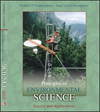 |  Principles of Environmental Science William P. Cunningham,
University of Minnesota
Mary Ann Cunningham,
Vassar College
Food and Agriculture
Learning ObjectivesAfter studying this chapter, you should be able to
I.describe world food supplies and some causes of chronic hunger in the midst of growing food surpluses. |
 |  |  | II.explain some major human nutritional requirements, as well as the consequences of deficiencies in those nutrients. |
 |  |  | III.differentiate between famine and chronic undernutrition, and understand the relation between natural disasters and social or economic forces in triggering food shortages. |
 |  |  | IV.sketch the roles of living organisms, physical forces, and other factors in creating and maintaining fertile soil. |
 |  |  | V.differentiate between the sources and effects of land degradation, including erosion, nutrient depletion, waterlogging, and salinization. |
 |  |  | VI.analyze some of the promises and perils of genetic engineering. |
 |  |  | VII.explain the need for water, energy, and nutrients for sustained crop production, as well as some limits on our use of these resources. |
 |  |  | VIII.recognize the potential for low-input, sustainable, regenerative agriculture. |
|



 2002 McGraw-Hill Higher Education
2002 McGraw-Hill Higher Education